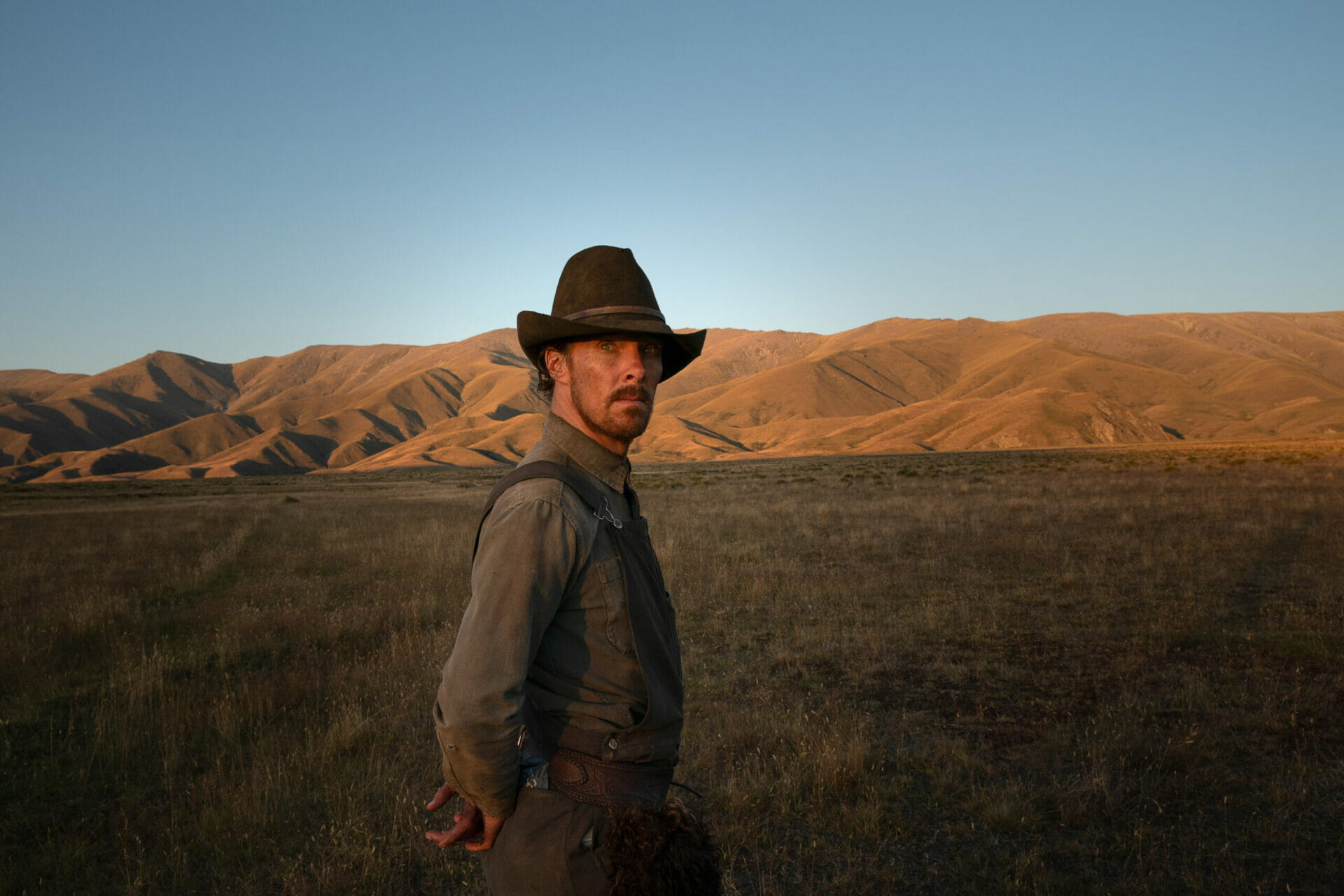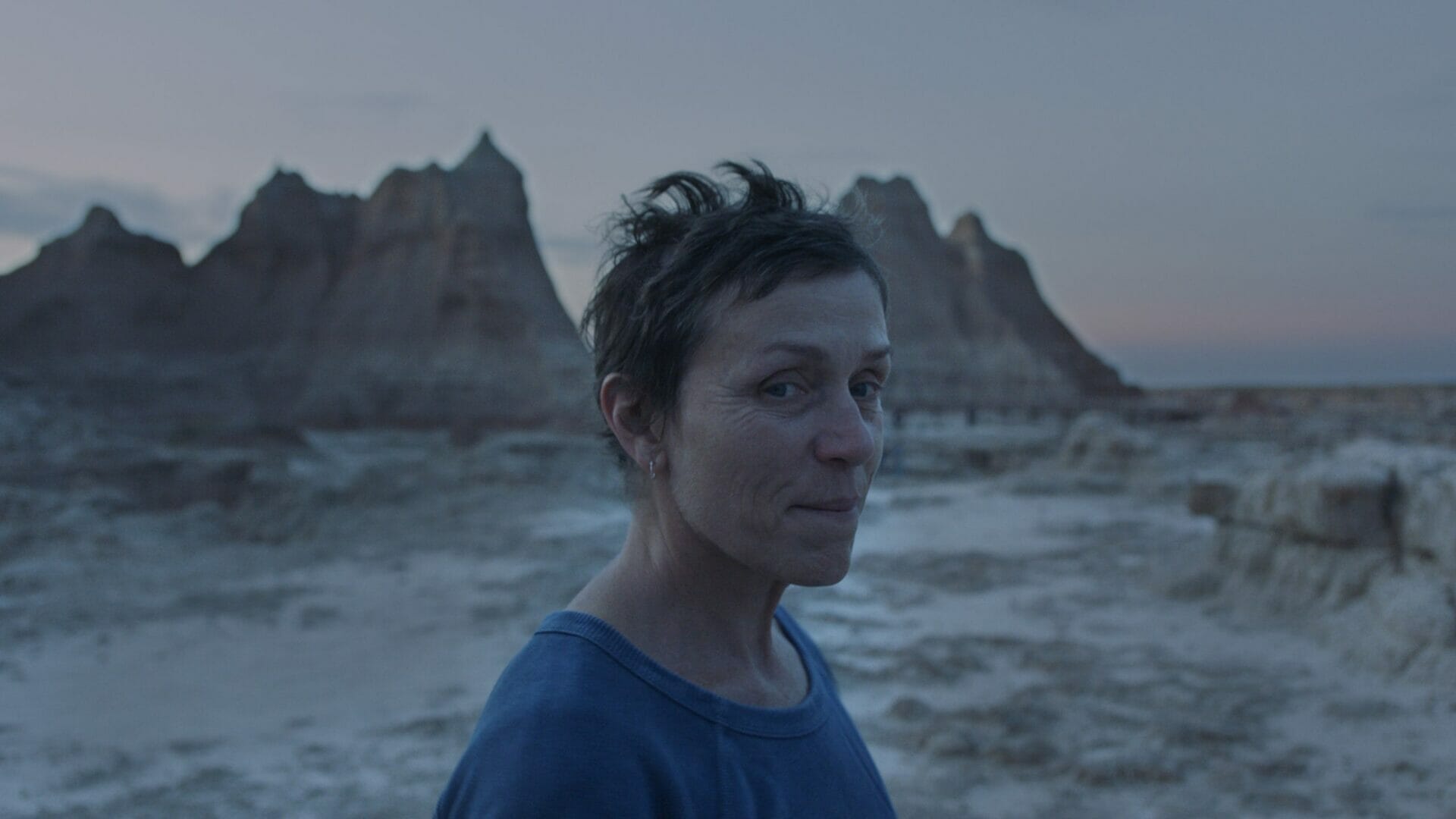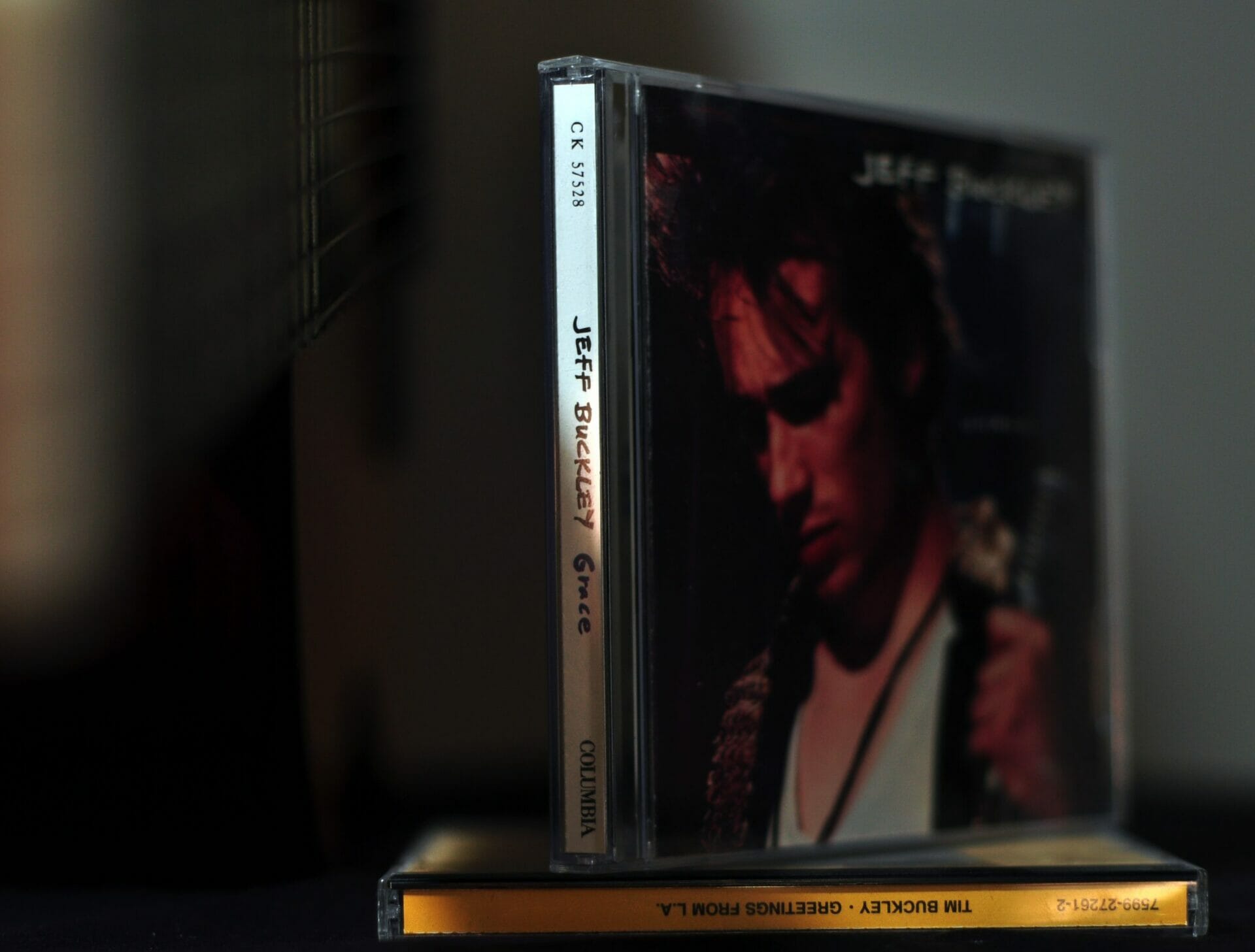
Brokeback Mountain | A Love No One Dares to Tell
Year
Runtime
Director
Cinematographer
Production Designer
Music by
Country
Format
Genre
The wild lands of the Old West are a place for ‘real’ men. Here survival requires strength, independence, and even cruelty and violence. However, for the two young cowboys Ennis (Heath Ledger) and Jack (Jake Gyllenhaal) the hostile West, symbolized by the pasturelands of the fictional Brokeback Mountain in Wyoming, means freedom to love.
Directed by the Taiwanese director Ang Lee, since its release in 2005 Brokeback Mountain has broken new fertile ground in the Western genre, by depicting the complex twists and turns of a love story between two men in the 1960s American West. The film is an adaptation of American writer Annie Proulx‘s short story of the same name, first published in The New Yorker on October 1997, and winner of the National Magazine Award for Fiction in 1998. Proulx’s words bring a female gaze onto a traditionally and culturally male world. American writer Diana Ossana contributed to preserving and enriching this perspective, co-writing the screenplay for the movie with Pulitzer Prize-winning author Larry McMurtry.
What results is a poetic drama, a sensual rural romance, with a sophistication of diverse points of view that investigate not only same-sex love but also the American West and the Western genre. Proulx’s story coupled with Lee’s direction subverts the archetypes, stereotypes, and aesthetics related to the conventional collective imagery associated with the genre and the macho figure of the cowboy. Brokeback Mountain, and the instant acclaim with which it was greeted by both public and critics, testify to its leading role in redefining the standards of the neo-Western genre, and paving the way for the strand of so-called Queer Westerns. Not only that. It was one of the first movies on the mainstream circuit to show a same-sex relationship in a transparent way. In a very short time, this turned it into a groundbreaking landmark in LGBTQ+ cinema.
A safe place for a risky feeling
It’s summer 1963, in Wyoming. Jack Twist (Jake Gyllenhaal) and Ennis Del Mar (Heath Ledger) are two young men in need of a job. Foreman Joe Aguirre (Randy Quaid) hires them as shepherds to herd his sheep on Brokeback Mountain. The two could not be more different. Jack is outgoing, sunny, and friendly. In contrast, Ennis is taciturn, reclusive, and introverted. Isolated from society, they get to know each other intimately and end up indulging their mutual attraction, letting their passion explode. In this way the boundless landscapes of Brokeback Mountain become their refuge, where they can openly live out their sexual relationship and their secret love.
When the summer ends, the two return home to their respective lives. Ennis marries Alma Beers (Michelle Williams) and has two little girls. While Jack moves to Texas, where he meets his future wife Lureen Newsome (Anne Hathaway). However, despite their efforts to settle into a standard, ordinary life, they cannot pretend that nothing has happened. So when they finally meet each other again after years, the fire that binds them rekindles as they realize that they never cut their bond and never forgot Brokeback Mountain.
Brokeback Mountain premiered at the 62nd Venice International Film Festival, where it won the Golden Lion. It was to be the first of numerous awards.
A heartwarming Wild West
The Western is certainly one of the most deeply-rooted genres in American society and history. The fascination of conquering those endless wastelands, the dichotomy between civilization and wilderness, between interiority and the unknown. These scenarios and images, real or not, have an intrinsic connection to a certain Western ideal of masculinity. Men with rough, sunburned features and a glacial gaze, like those portrayed by John Wayne and Clint Eastwood. Detached men with an iron morality and a rigid sense of honor, linking traditional Westerns such as Rio Bravo (1959) and revisionist ones such as Dances with Wolves (1990), but also neo-Westerns and hybrid genres, such as Westworld.
Cowboys appear as remote, unsentimental characters. And love itself has little place in this world (and in this genre), and those who are to be loved become a marginal part of the civilized world. The heart of the narrative of love remains bonded to a totally masculine dimension, influenced by the cult of machismo, which shows and deems feelings as suitable only for women. Moreover, there is also an ingrained repressed homophobia in the genre. In Brokeback Mountain, after their first sexual intercourse – which is also itself depicted in a wild, almost animal-like ‘macho’ key – Ennis makes it clear to Jack: “I ain’t no queer.” Nevertheless, the movie slowly creates its own path, moving away from the trend outlined above.
Ang Lee crafts an entirely new lexicon for the genre, handling the tropes of the Western in a way that completely subverts them, but without forsaking them completely. For example, even in Brokeback Mountain, the setting shows the contrast between wilderness and society and civilization. However, if the classic strand sees cowboys finding the meaning of life in rugged lands, and especially in the lonely journey, Wyoming in Brokeback Mountain appears as a Wild West capable of embracing and promising freedom and sanctuary. Ultimately, it is the pastures of Brokeback Mountain that make the love between Jack and Ennis blossom and allow them to live out their feelings and understand the meaning of their existence.
Cowboys as never seen before
In this same vein, in classic Westerns, the wilderness identifies a masculine world, as opposed to the domestic reality, where women take care of the hearth. In Brokeback Mountain, though, female characters also evolve and become multifaceted. Alma and Laureen prove to be more than just wives and mothers bound to home and family. They are also complex female characters, rich in authentic and equally intricate feelings, who are not waiting for a man to save them. They are women who hold the reins of their own destinies.
Symmetrically, analogous to traditional cowboys, Jack and Ennis feel at home only when they are away from society. As mentioned above, it is the wild Brokeback Mountain that is their true home. The work done on their outward appearance and personalities is also noteworthy. Their features set them sharply apart from their ancestors. Young, with bright eyes and gentle faces still unmarked by wrinkles and the sun, they come across as passionate and fragile. And their masculinity is subtly challenged several times throughout the movie. But this happens only when they are far away. Whereas when they are in each other’s arms, sheltered, they show themselves to be determined and “real” men and give up their inner conflict with their masculinity for a few moments of love.
This is precisely because, besides loneliness and inner and outer conflicts, Brokeback Mountain is at its core a movie of and about love. The story told since the dawn of time. That is, that of two human beings who, far from being perfect, seek their own space in the world that is hostile to them. Two lonelinesses who meet and for a while seem to fit together perfectly. But it is only a brief illusion before they collide with reality. Where their forbidden love can exist only when hidden, only for a few brief moments when they can escape their pain.
A soft, enveloping loneliness
Argentine musician and composer Gustavo Santaolalla handled the soundtrack for Brokeback Mountain. His work earned him an Academy Award for Best Original Score and a Golden Globe Award for Best Original Song with the song A Love That Will Never Grow Old (with lyrics by Bernie Taupin, and performed by Emmylou Harris).
He [Ang Lee] gave me something I was already experimenting […] which is the use of space and silence. And this was a perfect movie to do that because, you know, these guys don’t talk that much. And I really love the use of space and the use of silence, you know, in music in general as I do the discreet use of music in films.
Composer Gustavo Santaolalla, TIFF Bell Lightbox 2014
Santaolalla’s work on the music helped put some distance between this and other classic Westerns. Instrumental music, usually traditionally played by guitar and Pan flute, and suspenseful rhythms disappear in favor of orchestral pieces, and also feature singing. Santaolalla played his ronroco (a folk string instrument from the Bolivian Andes) and also used tunes by Bob Dylan and Roger Miller. The end result is a soundtrack that is more reminiscent of a romantic drama and contributes to the nostalgic and soft atmosphere that envelops the entire narrative.
Clenched mouths and tensive gestures
Santaolalla’s music is not alone in giving extreme importance to silences. So too are the characters’ gestures. Indeed, a sense of emptiness echoes in the lack of words between Jack and Ennis to make way for gestures. Each and every physical act and detail becomes laden with meaning and a longing to communicate. However, each gesture is far from theatrical, yet proves authentic, simple, and deeply human. Ledger’s physical interpretation of Ennis, in particular, conveys his character’s inner contrasts. His tense movements, his contracted posture, and his mouth choking on words express Ennis’ inability and fear to accept a forbidden feeling and sensitivity.
I wanted him to be clenched. A clenched fist. I wanted his mouth to be clenched. Any form of expression had to be painful.
Heath Ledger in an interview with Pop Entertainment
Every directorial choice emphasizes emptiness, effort, and conflict, showing heroic and impossible feelings. The homophobic world in which Jack and Ennis live has so deeply affected their mentality that they cannot accept their own nature. In Brokeback Mountain, “love” seems to make itself a taboo word that no one dares to utter. Therefore, only gestures can show it.
Wide spaces and long distances
Again, the leading characters in Westerns face inhospitable deserts, places unknown and full of danger. Landscapes are usually filmed from a distance so that the viewer’s eyes can venture to the horizon. Characters are either filmed at a distance, caught up in the action, or in heroic and stoic poses that highlight their solidity and physical strength. In this case, the remoteness between the cowboys means only one thing: defiance and opposition.
This is a quite different setting when compared to the idyllic, green pastures of Wyoming, pristine yet already explored. Mexican cinematographer Rodrigo Prieto made full use of long lenses, allowing the viewer to explore only a small part of the area and focusing on the characters and the distance between them. A distance that is not a challenge, but rather the impossibility of fully expressing their love. Prieto and Lee wanted the cinematography to be as simple as possible to reflect the nature of the cowboys. In addition, as revealed by Prieto in an interview with ARRI, they chose to shoot in a 1.85 aspect ratio that matches the verticality of the mountain and allows them to focus more on the bodies.
Jack and Ennis often stand and act like stereotypical cowboys, but their bodies seem to show something that does not belong to them. What really defines them and their relationship is distance. Not just the distance between them and society, as they know they will always be ostracized. But also a real physical and emotional distance that leads them to always feel a little outside the box. Therefore, the use of long lenses makes it impossible to tell whether the two are close or not, emphasizing the emotional remoteness they are forced to maintain. Ultimately, every detail fits a precise direction that aspires to the narrative of a forbidden and untold promise of love.
A similar choice in terms of distance can be found in Jane Campion‘s The Power of the Dog, which bears some parallels to Brokeback Mountain: first and foremost the presence of characters of few words and the consequent work on gestures, but also the underlying homoeroticism and homosexuality.
“Old Brokeback got us good, don’t it?”
It took many attempts before Ledger and Gyllenhaal could bring Ennis and Jack to life under Lee’s direction. Gus Van Sant and Pedro Almòdovar declined to direct the movie, just as Matt Damon and Joaquin Phoenix declined to play the leads. At the 78th Academy Awards, out of eight nominations (including Best Picture), Brokeback Mountain won three awards: Best Director, Best Adapted Screenplay, and Best Original Score. Academy members were accused of homophobia for not favoring it as Best Picture, with even Annie Proulx commenting on this. The Hollywood Reporter reported that they later regretted that decision. Other awards include four Golden Globe Awards and four BAFTA Awards.
What’s more, in 2016 BBC ranked Brokeback Mountain 40th in its 21st Century’s 100 greatest films list. The movie grossed nearly $180 million despite some cases of censorship abroad, and even in Italy.
In the end, Brokeback Mountain today is widely recognized as a milestone in LGBTQ+ cinema that allowed many realistic homosexual characters to emerge on screen. Jack and Ennis proved that they could reach the heart of the diversity of viewers in that they are not stereotypical, comic, and silly characters. Nor are they mere vehicles for expressing queer issues, nor tied to social denunciation. Brokeback Mountain successfully allowed homosexual characters to flourish in a more authentic, complex, and multifaceted way. Above all, it has been able to establish itself as a point of no return in the landscape of LGBTQ+ cinematic narratives for its ability to convey a universal feeling through a very niche story. Anyone can identify with Jack and Ennis: a testament to the power of good storytelling.
Tag
Buy a ☕ for Hypercritic










